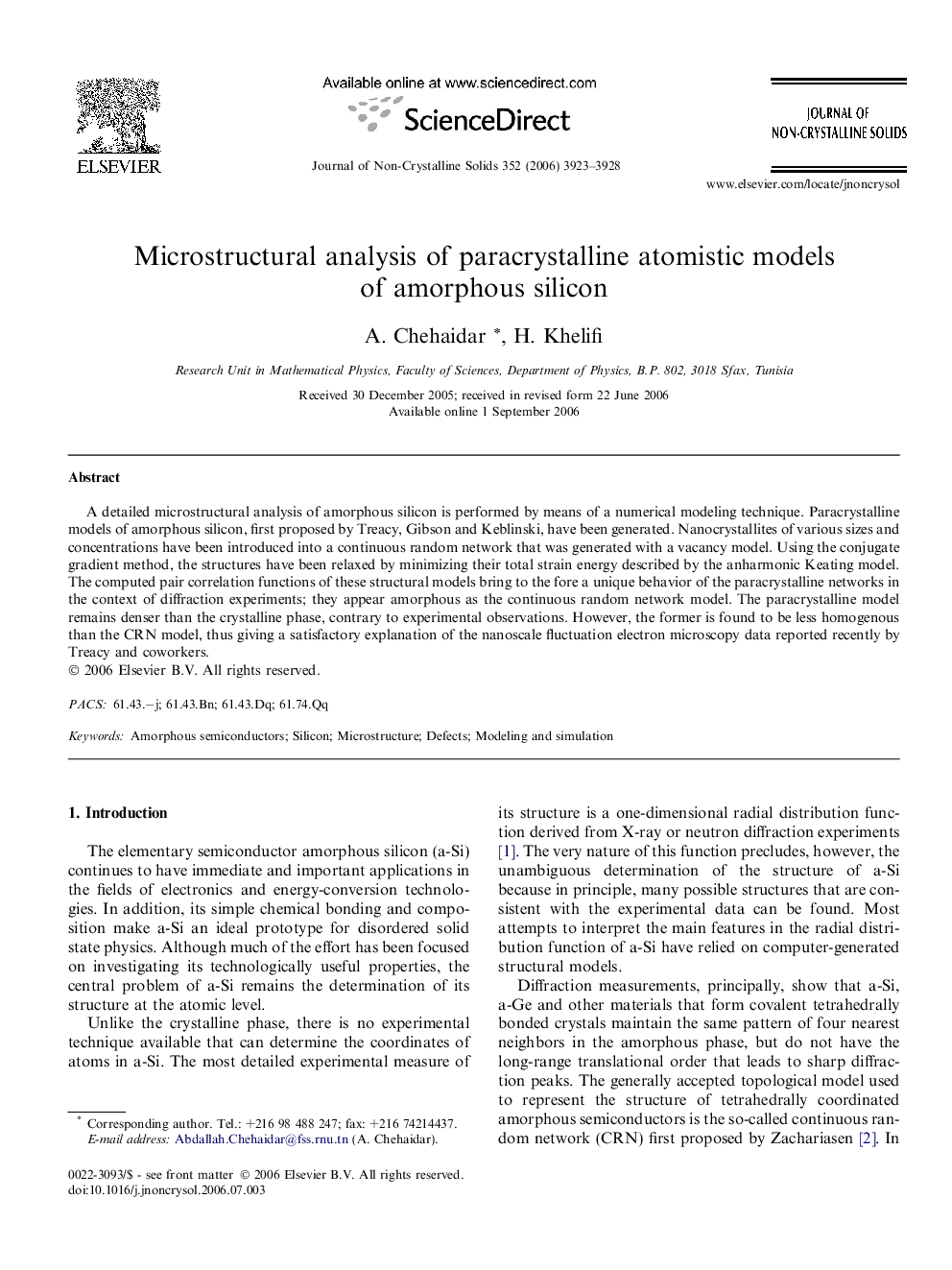| Article ID | Journal | Published Year | Pages | File Type |
|---|---|---|---|---|
| 1486083 | Journal of Non-Crystalline Solids | 2006 | 6 Pages |
A detailed microstructural analysis of amorphous silicon is performed by means of a numerical modeling technique. Paracrystalline models of amorphous silicon, first proposed by Treacy, Gibson and Keblinski, have been generated. Nanocrystallites of various sizes and concentrations have been introduced into a continuous random network that was generated with a vacancy model. Using the conjugate gradient method, the structures have been relaxed by minimizing their total strain energy described by the anharmonic Keating model. The computed pair correlation functions of these structural models bring to the fore a unique behavior of the paracrystalline networks in the context of diffraction experiments; they appear amorphous as the continuous random network model. The paracrystalline model remains denser than the crystalline phase, contrary to experimental observations. However, the former is found to be less homogenous than the CRN model, thus giving a satisfactory explanation of the nanoscale fluctuation electron microscopy data reported recently by Treacy and coworkers.
